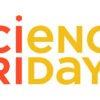Michael Y. Song et al. –
Over 10 years, a person with insulin-dependent diabetes will cut their fingers roughly 20 000 times to obtain blood glucose concentrations. As indispensable as the fingerstick has been in the management of this disease, it presents a barrier to optimal individualised management of diabetes, prediabetes, and even general wellness.
Fingerstick collection of capillary blood dates back to the 1960s, but it wasn’t contemplated for self-monitoring until the late 1970s. Despite miniaturisation and modernisation, the central tenets and challenges of its practice are largely unchanged. Each glucose measurement involves a time-consuming and painful fingerstick blood sample. It requires the individual to be awake, take initiative, and be in the right setting. These practical limitations can limit comprehensive understanding of a person’s unique glucose response to diet and lifestyle, diabetes, or other conditions.
Read the full article in The Lancet.





